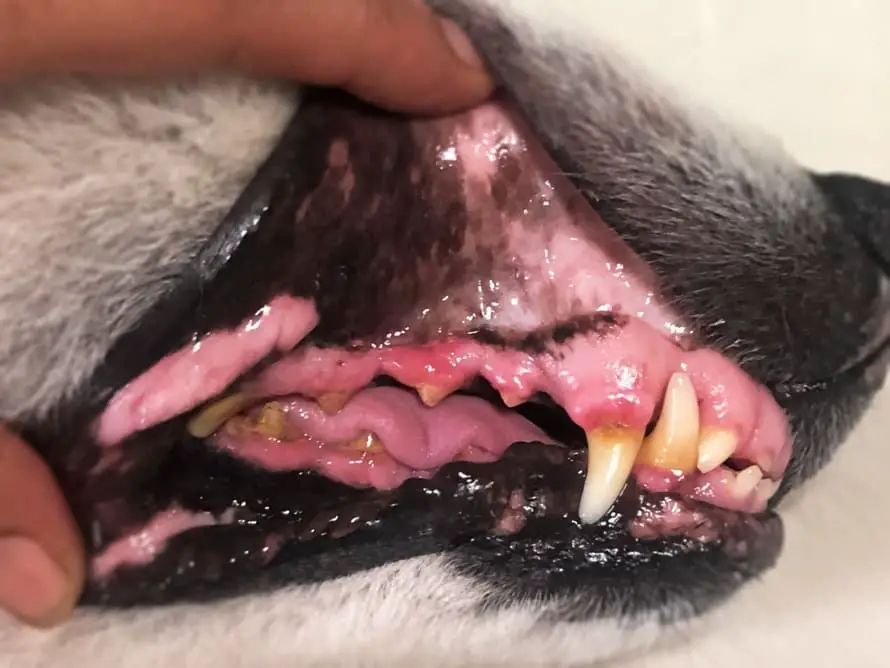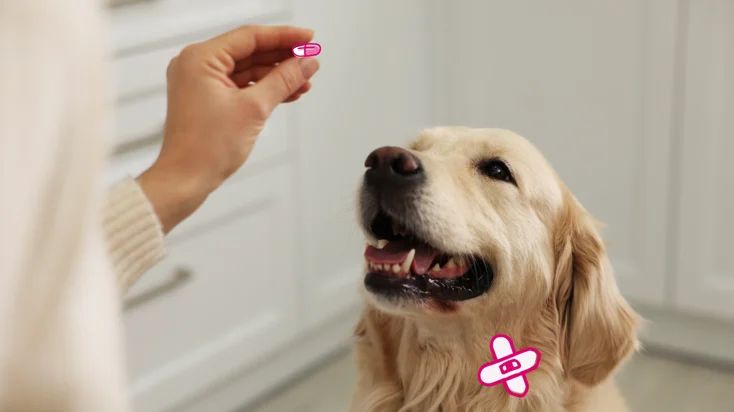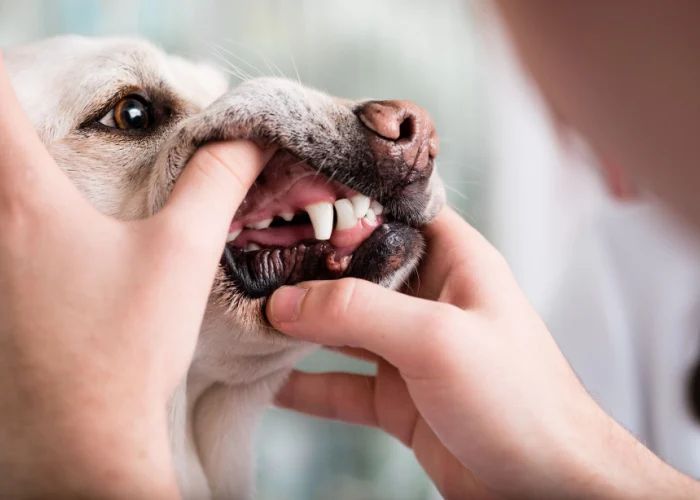Introduction
Tooth extraction is a common dental procedure performed on dogs to remove teeth that are diseased or causing problems. There are several reasons tooth extraction may be necessary for canine dental health:
- Periodontal disease – Infection and inflammation of the tissues surrounding the tooth. This is the most common reason for extractions in dogs.
- Tooth fracture – Cracks or breaks in the tooth often require extraction if the damage is severe.
- Tooth resorption – A condition where the tooth is essentially dissolving. This progressive disease often necessitates removal.
- Retained deciduous teeth – Failure of puppy teeth to fall out can cause problems for permanent teeth coming in.
- Severe tooth malocclusion – Teeth that are severely misaligned or crowded may need extraction.
- Oral tumors – Tooth extractions may be done to remove or biopsy tumors in the mouth.
- Trauma – Injuries to the mouth can cause tooth fractures requiring extraction.
Tooth extractions are performed under general anesthesia and involve surgically removing teeth from the sockets in the jaw bone. It is a common procedure in veterinary dentistry when teeth are damaged, infected or causing ongoing pain and problems in a dog’s mouth.
Signs a Dog May Need an Extraction

There are several signs that indicate a dog may require a tooth extraction:
Bad breath: Persistent bad breath or halitosis that does not resolve with dental cleanings can point to an infected or dying tooth that needs removal.
Trouble eating: If a dog shows signs of pain or difficulty chewing or eating, such as dropping food, this could mean there is an issue with the teeth or gums.
Swelling: Swelling around the mouth, jaw, or face can signify an abscessed tooth or infection which usually necessitates extraction.
Bleeding gums: Inflamed gums that bleed easily even without provocation can be a sign of advanced periodontal disease that may require compromised teeth to be extracted.
The Tooth Extraction Procedure
The tooth extraction procedure itself is relatively straightforward for dogs. It is performed under general anesthesia so the dog feels no pain during the procedure. The veterinarian will first insert an IV catheter and inject anesthesia drugs to induce sleep. Once the dog is under anesthesia, the vet will monitor vital signs closely and ensure a proper plane of anesthesia is maintained.
The problematic tooth is then extracted using dental instruments designed for tooth removal. The vet may need to section the tooth if the roots are firmly embedded in the socket. Extraction forceps are used to carefully loosen and remove any remaining root fragments. Once the tooth is fully removed, the vet thoroughly irrigates and cleans the empty socket.

For aftercare, the vet may place a stitch or two to close the gumline over the extraction site. They will prescribe pain medication, often an NSAID like Rimadyl, and antibiotics to prevent infection. The dog will need to avoid chewing toys and hard food on the surgical side during initial healing. Follow-up appointments to check the extraction site are typically recommended after 1-2 weeks.
Recovery Timeline
The recovery timeline after a dog’s tooth extraction can vary depending on the specific procedure, but there is a general path to healing that owners can expect.
Day 1
On the first day after the extraction, dogs will likely still be groggy from anesthesia. They should be kept comfortable and prevented from being too active while the anesthesia wears off. Owners should monitor them, provide a soft place to rest, and avoid giving hard treats or toys that could disturb the surgical site.
Days 2-3
By days 2-3, dogs should be over the effects of anesthesia. Some mild swelling around the extraction site is normal. Owners should provide soft foods and watch for signs of pain or bleeding from the mouth. Ice packs applied to the cheek can help reduce swelling.
Days 4-7
During this time, swelling should go down, and dogs will start feeling like themselves again. Stitches may still be present. Activity can be increased gradually, but vigorous play or chewing hard toys should still be avoided to allow proper healing. Soft canned food is ideal during this stage.
Days 8-14
By days 8-14, stitches will dissolve or need to be removed by the vet. Most of the swelling should be diminished. Dogs should be able to transition back to regular kibble. Some tenderness may still be present when eating or playing with toys. Vigorous activity should still be limited.
2 Week Checkup
At around 2 weeks post-op, dogs should have a recheck appointment with the vet. Provided the extraction site is healed properly, they can gradually resume normal activity levels. The vet may advise transitioning slowly with toys and treats to avoid re-injury.
Managing Pain
After a tooth extraction, dogs will likely experience some level of pain or discomfort as the surgical site heals. Veterinarians will prescribe pain medications to help manage this discomfort and keep your dog as comfortable as possible.

Typically, dogs are sent home from the procedure with 3-7 days worth of pain medication. Common medications prescribed include opioids like buprenorphine or tramadol, non-steroidal anti-inflammatory drugs (NSAIDs) like carprofen or meloxicam, and/or antibiotics to prevent infection.
It’s important to carefully follow your vet’s instructions when giving prescribed pain medications. Never give your dog more than the prescribed dose. Carefully monitor your dog’s pain levels at home to determine if the medications need to be continued beyond the initial prescription.
Signs that your dog is still in pain and may need more medication include:
- Whining or crying
- Restlessness or inability to get comfortable
- Reluctance to eat or drink
- Being less eager to play or go for walks
- Swelling or bleeding from the surgery site
By keeping your dog comfortable with adequate pain control, you can help ensure they heal as quickly and smoothly as possible after a tooth extraction.
Improved Quality of Life
After a tooth extraction, many dog owners notice an improvement in their dog’s overall quality of life once the initial healing period has passed. With the source of pain and infection gone, dogs often regain their appetite and become more energetic and playful again.
One of the most noticeable changes is that a dog’s appetite often improves dramatically after a troublesome tooth is removed. Where they once picked at their food or only ate soft kibbles, dogs will often wolf down meals with renewed enthusiasm after extraction. This is a very positive sign that the dog is no longer experiencing dental pain that made eating uncomfortable.
Dog owners also often report their pet has more energy and is eager to play or go for walks again. Lingering dental infections sap a dog’s vitality and make them lethargic. Once healed from extraction surgery, dogs are relieved of chronic pain and able to regain their natural energy levels. Increased playfulness and activity are clear indicators the dog is feeling much better.
Chewing and Eating
After a tooth extraction, dogs will need to transition to softer foods that are easier to chew and swallow. Hard kibbles or treats could potentially dislodge the blood clot at the extraction site or irritate the gums, causing pain or complications in healing. Owners should feed soft canned food, add warm water to kibble to soften it, or look for veterinary dental diets made for recovery.

It’s important to closely monitor the dog during mealtimes for the first few days after extraction. Make sure they are chewing food completely on the side opposite the extraction site. Large pieces may need to be broken down into smaller bites. Avoid any hard chews or toys during initial healing as well.
If the dog seems to have trouble eating or is exhibiting signs of pain or discomfort around their mouth, contact your vet. With patience and the right diet adjustments, most dogs are able to return to their normal eating habits after a couple weeks of soft food meals.
Long-Term Care
After a dog has a tooth extracted, long-term care is crucial to prevent complications and ensure their remaining teeth stay healthy. Here are some tips for ongoing care after an extraction:
Brush Remaining Teeth
It’s important to regularly brush your dog’s teeth after an extraction, focusing especially on the teeth neighboring the extracted tooth. Brushing helps remove plaque and tartar to prevent decay and infection in the remaining teeth.
Use a soft-bristled brush and dog-safe toothpaste. Gently brush all sides of the teeth in a circular motion. Establish a daily brushing routine and make it a positive experience with praise and treats.
Regular Vet Checkups
Schedule regular vet visits every 6-12 months to inspect your dog’s teeth after an extraction. The vet will look for any signs of infection, decay, or other issues with the remaining teeth and gums.
Based on your dog’s oral health, the vet may recommend professional dental cleanings or treatments to keep their mouth healthy after losing a tooth.
Costs
Tooth extraction can be an expensive procedure, especially if multiple extractions are required. The cost will depend on your veterinarian and geographic location, but you can expect to pay $200-500 per extracted tooth. This covers the pre-operative exam and tests, anesthesia, the extraction itself, hospitalization, medications, and follow-up care.
Aftercare expenses don’t stop once your dog leaves the vet. You’ll need to buy special foods and treats while their mouth heals. Canned food and dental diet kibbles are easier to chew and digest. Avoid hard toys and chews during recovery as well. Pain medication may be prescribed too, adding to costs. Luckily, prescribed meds only need to be given for a week or so.
While expensive up front, extracting problematic teeth often saves money in the long run. Infected teeth left untreated could lead to diseases affecting the heart, kidneys, or other organs. This requires intensive veterinary treatment down the road. So while tooth extraction itself is pricey, it prevents much greater expenses later on.
Conclusion
In conclusion, tooth extraction can significantly improve a dog’s quality of life and overall wellbeing. Though the procedure and recovery period can cause some discomfort, most dogs bounce back to their normal, happy selves within a few days. Once healed, dogs are better able to eat, play, and go about their daily activities without pain or infection from a problematic tooth.
Tooth extraction removes the source of infection and discomfort, allowing the dog’s body to heal. Owners report improved appetite, energy levels, and demeanor in dogs after extractions. While ongoing dental care is still important, extraction provides immediate relief for dogs suffering from advanced dental disease. Overall, extraction is a safe and effective procedure that can give dogs a new lease on life.